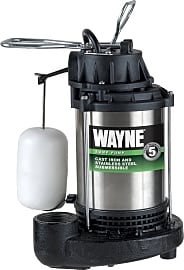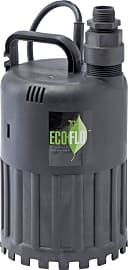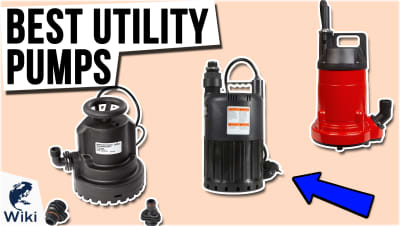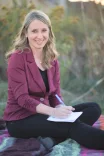The 10 Best Submersible Pumps

This wiki has been updated 36 times since it was first published in October of 2016. When you have to move a substantial amount of liquid, you'll need a submersible pump that is designed to work underwater without affecting its electrical components. Our list includes models suited for everything from home aquariums and ponds to clearing a flooded basement or removing wet sand and silt. For safety’s sake, always follow the manufacturer’s guidelines regarding proper setup and use. When users buy our independently chosen editorial choices, we may earn commissions to help fund the Wiki.
Editor's Notes
March 03, 2021:
As mentioned on my previous editor’s note on our list of the best sump pumps, there are certain qualities to look for in a submersible pump, of which, there are two in particular, and they are: material considerations and ability to filter debris. Regarding the first, while thermoplastic is quite popular nowadays, and while most options should provide enough durability to withstand high pressures and regular use without cracking, I’ve come across professionals who advise against them, and suggest a pump with a cast iron or metal housing instead.
Regarding the second consideration, the ability to filter out smaller rocks and debris is of paramount importance if your submersible pump is being used as a trash or sump pump. Pool or bilge pumps may be able to compromise more on build and can get away with thermoplastic material as it makes them lighter on boats for instance, and/or because they aren’t filtering out rain water with the ability to block the pump with debris - ocean and pool water is virtually free from debris compared to rain water that collects debris before it reaches the sump pit. Here, you ideally want to look for a pump with large holes and lots of clearance, or one that clearly states that it can handle debris.
As it stands, these pumps are all looking decent in this regard and, so I didn’t feel it imperative to replace any of our current picks on the list at this point in time. There are some models here that I’ve highlighted in other places too, like the Tsurumi HS2.4S-62 which is actually a trash pump that I had also highlighted in our list of utility pumps – a list by the way, which has a number of high-quality submersible as well as non-submersible pumps. Another is the Wayne CDU980E which is also on our list of sump pumps. In general, both Wayne and Zoeller make some great, highly durable sump pumps with float switches.
June 03, 2019:
A submersible pump is safe to use in water because it’s encased in a housing that does not allow for ventilation. These machines often come with durable frames made of materials like cast iron. The cables and mechanical shaft are also sealed to prevent water intake.
In this update, we removed the Esky EAP-03 due to issues with longevity. The Simer Geyser Classic joins the list, as a lightweight solution that can be carried easily around your home as the need arises. Just screw on your garden hose, plug it in, and it’s ready to do its job. If you find yourself in need of multiple pumps, it comes in everything from single units to packs of five.
The Superior Pump 91250 is a top choice that packs a lot of punch into a small frame, and it’s suitable not only for flooded areas of your home, but also for outdoor ponds and fountains. It’ll conveniently clear away liquid up to 1/8 inch from the ground. Its split capacitor motor is designed for high efficiency and power.
If you’re looking to remove trash, you can hardly go wrong with the Tsurumi HS2.4S-62, which has a built-in, shaft-mounted agitator to suspend solids. Its semi-vortex impeller ensures durability and high pump performance. Its oil filter provides lubrication, and the V-ring seal protector safeguards it against abrasive particles.
Pumping Up The Competition
Multi-stage pumps are typically lowered into boreholes and used for both residential and commercial water extraction from large wells.
Water represents a double-edged sword at times, meaning that it can have positive or potentially disastrous effects on its surroundings. While gaining the ability to maintain complete control over this natural resource is an unlikely eventuality, the submersible pump can facilitate the process of moving large volumes of water in a more efficient manner.
Operating completely underwater, the submersible pump is equipped with a hermetically-sealed motor designed to push volumes of fluid from one place to another. This movement usually occurs in an upward vertical fashion in which a fluid substance is pumped to the surface of a well or body of water. Unlike a jet pump, which operates through the principles of vacuum suction to move liquid from a low elevation to a higher one, the submersible pump can be placed deep within a resource where it pushes liquid directly to the surface without the concern for pump cavitation.
An electric submersible pump is centrifugal in design and has one or a series of rapidly rotating impellers. Each impeller accelerates the fluid, replacing its kinetic energy with velocity. Powered with this momentum, the fluid then exits the impeller and enters a nearby diffuser, which is often made from high-nickel iron to minimize corrosion damage. The diffuser works to convert the fluid's velocity energy to a steady flow under pressure. If the pump has only one impeller and diffuser, then it's referred to as a single-stage device. Pumps with two or more impellers and diffusers are known as multi-stage units. In a multi-stage pump, fluid continues to gain velocity and pressure incrementally as it travels through each of the pump's impellers and diffusers until it achieves a total dynamic head with the right amount of pressure and energy to successfully reach the surface.
Single-stage submersible devices are traditionally used for pumping sewage, industrial slurries, and for draining shallow ponds. Multi-stage pumps are typically lowered into boreholes and used for both residential and commercial water extraction from large wells. They are also popular for use in pumping oil wells.
These types of pumps can also be small and compact in size where they are used to help regulate the water flow from within small indoor aquariums, keeping one's fish healthy and active.
Rather than operating at a distance from a body of water, submersible pumps work within the water the move, expending less energy to push their contents to the surface, whereas other pumps are forced to pull the liquid from a much higher elevation. Submersible pumps are also relatively quiet in operation and have little need for priming or maintenance.
Running The Gamut Of Choice
When choosing a submersible pump, one must consider the size of their land and exactly what they're looking to accomplish. For example, if you own a lot of farmland and want to ensure that your vegetation stays properly irrigated, you may decide to invest in one or multiple submersible devices. They can be placed within a nearby lake or reservoir for a permanent supply of fresh water. With this in mind, researching the overall flow rate of the devices you consider is important to ensure your land doesn't go thirsty.
With this in mind, researching the overall flow rate of the devices you consider is important to ensure your land doesn't go thirsty.
If you're working at an industrial job site, consider a pump with the ability to move solids and debris like sand or small pieces of trash. Submersible devices with the ability to move bulky items (in addition to water) may also have a tendency to operate at high temperatures, so built-in thermal overload protection will be beneficial in such circumstances.
Should you need to drain sources of standing water from a nearby pond, swimming pool, or fountain, consider a single-stage pump, since the water won't have to travel quite so far up the unit's shaft to reach the surface. This type of pump will also come in handy if live in an area prone to flooding. By contrast, if you're going to install your pump into a deep residential well, then a multi-stage unit will work best to ensure that it can produce enough pressure to move large volumes of fluid to the surface quickly.
Finally, the motor housing for your pump should be made from durable materials such as stainless steel for superior corrosion resistance over time.
A Brief History Of Submersible Pumps
The concept of the pump dates as far back as 2,000 B.C.E. to the ancient Egyptian use of the shadoof, a rudimentary tool that made use of a long suspended rod with a bucket at one end and a weight on the other to raise water for irrigation purposes along the Nile River. This device is still used today in certain parts of the world.
Russian oil delivery system engineer Armais Arutunoff is credited with installing the very first submersible pump in the 1920s.
By the year 200 B.C.E., Greek physicist and engineer Ctesibius invented the water organ, an air pump that used organ pipes, valves, and the weight of water. It was the principal driving design behind the modern reciprocating pump. Archimedes also designed his screw pump around the same time, which is still used to pump both liquids and solids in industrial settings.
Russian oil delivery system engineer Armais Arutunoff is credited with installing the very first submersible pump in the 1920s. By 1929, Pleuger Pumps designed the first submersible turbine pump, which was considered the predecessor for the modern multi-stage submersible pumps. The 1960s also saw the introduction of the first deep-well submersible water pump, developed by Poul Due Jensen. Both single and multi-stage devices still remain important in today's oil industry, as well as for domestic applications when it comes to efficiently moving water from within wells, managing irrigation systems, and handling any standing water that becomes a nuisance on one's property.















